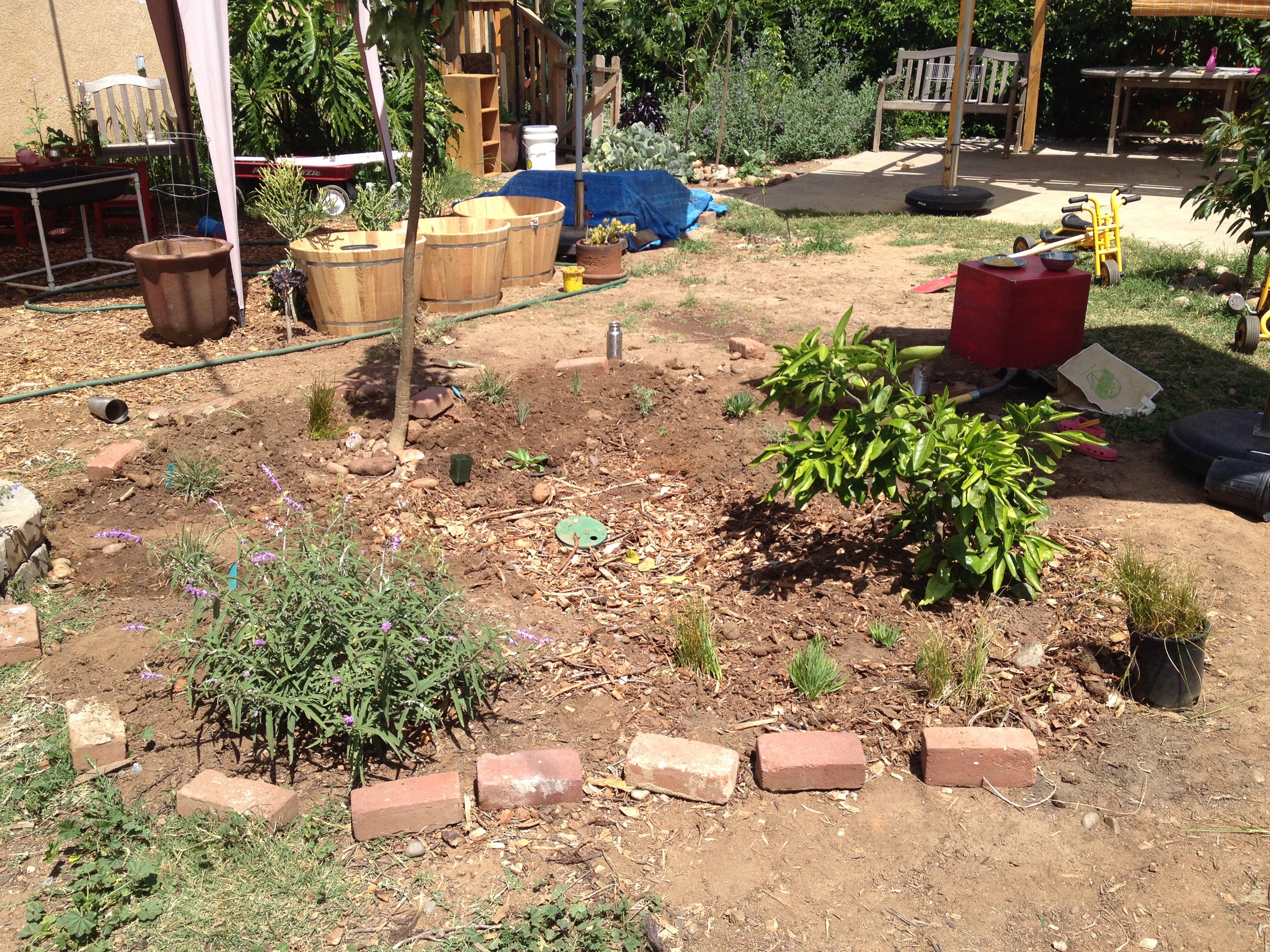I’ve installed hundreds of greywater systems over the last 11 years in San Diego, Riverside, and Orange Counties and have seen what works and what doesn’t. Rosalind and I have installed a wide variety of systems from simple Laundry to Landscape to advance whole house greywater systems that irrigate vast landscapes in new homes. Here are 5 Greywater myths I’d like to dispel:
1. I would like to use greywater to water my lawn
Actually, you should not use greywater to water your lawn. Some official language from the San Diego City Info Bulletin 208 clues us into why:
-
Ponding or runoff is prohibited and shall be considered a nuisance.
-
Graywater may be released above the ground surface provided at least two (2) inches (51 mm) of mulch, rock, or soil, or a solid shield covers the release point.
-
Graywater systems shall be designed to minimize contact with humans and domestic pets.
With these qualifications in mind ask yourself why you have a lawn? Is it for children or pets to recreate on? This is a legitimate reason for having a lawn. There is bacteria in greywater, and when that is applied to a surface that your children or pets play or lay on, it’s possible they may get sick. If you don’t have a lawn for these reasons, considering the seriousness of the drought, maybe you don’t need to have a lawn.
2. I want to store my greywater
You should not store your greywater. Because of the bacteria in greywater, this water will quickly turn foul and stinky.

If you want to clean your greywater in order to store it, this can be an expensive process as well as a maintenance issue.
The best way to use greywater is to get it into your soil under mulch where plant roots can drink the water directly and soil microbes can feed on the particles and nutrients that come with the greywater. Flood irrigation is far more cost effective than storing and pumping greywater. Learn how to install your own simple shower greywater system at our upcoming Hands-On Shower Greywater Installation Workshop!
3. Can’t I just use my greywater in my existing sprinkler system?
There are 3 reasons why you may opt not to do this.
First, there are particulates in the greywater that will clog a traditional irrigation system. We generally opt for flood irrigation out of larger (1/2”-2”) diameter pipes. Even when we incorporate pumps we can disperse the water with more of a flood irrigation style system that costs far less than the level of serious filtration that is needed to implement greywater in your existing drip system.
Second, your irrigation system functions under pressure (usually 15 PSI or more). In order to pressurize your greywater system, you need to integrate a pump, filter, and storage system which generally makes a system unreasonably expensive for most people. ($2K vs $5K-$10K)
Third, California code and generally healthy and safety dictates that you may not spray this water. Airborne bacteria is a health hazard.
4. Can’t I just hook up a hose to my washing machine?

There is a pump in your washing machine that requires a certain flow rate. If you constrict the flow too much, you can burn out your pump. We recommend not using less than 1″ pipe/hose. Most garden hoses are 3/4″ or 5/8″. Plus hoses tend to be made of material that has a high amount of friction which also restricts flow. And any kinks in the hose will create back pressure on your pump and may cause it to fail.
For between $250-$450 you can use materials that are sized right, put in the right mechanisms to protect your pump (like a air break), and plumb your laundry water directly out to the trees/shrubs/vines that need the water. This step will save you time, energy, and make your water use more efficient since the trees/shrubs/vines are matched to the water budget of your weekly laundry use. Learn how we optimized this laundry greywater system that was just a hose out to the landscape here.
5. With my high efficiency washing machine, I don’t see how we are producing enough water to make this worth my investment.
Actually, this is the closest to NOT being a myth. However, usually it’s still worthwhile to use this water conservation strategy, especially if you are interested in looking at the bigger picture.
High efficiency washers these days can use as little as 10-15 gallons a load. Some of you are actually only doing 1 load of washing a week. That equates to just over 500 gallons a year of water. A simple system with this much water might cost you as little as $600, less if you do it yourself. But with water costing less than .1cent/gallon, it can take many years to realize a return on investment.
However, if you can grow food with this water (tomatoes, oranges, passion fruit, grapes, etc…), your return on investment takes on more benefits. Many families do much more laundry than this, and have larger or top load machines that can use 25-50 gallons a load.

The impact of diverting this water from sewer systems into gardens on a citywide scale is huge when you consider sewage spills that contaminate our waterways, and how the amount of water we send out to the treatment plants can be reduced by hundreds of thousands of gallons if not millions.
